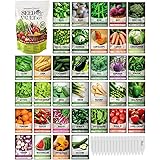SPECRAFT 8x2FT Wooden Raised Garden Bed with Legs - 15 Inch Deep Elevated Planter Box for Deep-Rooted Plants, Ideal for Balcony, Patio, Easy Assembly
$229.99 (as of 14:18 GMT -05:00 - More infoProduct prices and availability are accurate as of the date/time indicated and are subject to change. Any price and availability information displayed on [relevant Amazon Site(s), as applicable] at the time of purchase will apply to the purchase of this product.)Gartist 2Pcs Raised Garden Bed, Galvanized Planter Raised Garden Beds for Outdoor, 4x2x1ft, Vegetables,Flowers &Herbs,Heavy Duty Metal Raised Garden Beds Outdoor,Rust-Resistant & Easy Assembly
15% OffGetting Bulbs To Bloom Indoors
Spring flowering bulbs can bloom inside. Start the process of forcing bulbs in the fall for lovely winter blooms. Growing bulbs indoors takes up little space, and it’s easy and fun. The trick is to simulate a short winter. Make bulbs think it’s winter by placing them in a refrigerator, a cool closet, or even in a foam cooler place on a patio or balcony. By doing this, they will grow sturdy roots and start to sprout in preparation for spring.
Start With The Right Potting Soil
Use any good commercial organic potting soil mix, or you can make your own soil to plant the bulbs in. It’s not hard to make your own potting soil.Use one part perlite, 2 parts peat moss and one part sterilized potting soil. Get all these things mixed together well. These ingredients will make a nutrient filled potting soil that is clean, porous, and moisture retaining,.
Unsterilized soil from your outside garden because it may contain bacterial or fungal pathogens that could infect the plant roots, so it’s better not to use it.
Choose A Pot
Choose the pot you want to use after the soil is ready, and place a few pieces of broken crockery over the drainage holes. This keeps the hole from clogging up with compacted dirt, and also keeps the dirt from falling out during the planting process.
Now fill the pot half-full of soil mix. With the pointed ends up, place the bulbs in the container. Without actually letting the bulbs touch, plant the bulbs as closely together as possible. Fill the pot with soil mix, then water the bulbs thoroughly from the top or immerse in a tub of water. That will settle the soil around the bulbs.
It’s Time For The Dark
Try early blooming bulbs such as crocus, daffodils and snowdrops. Those all work well. Many places carry good bulbs. For example, you can click here for Daffodils from Breck’s, plus they have a lot of other beautiful flowering bulbs. It takes about 12 weeks to force these early bloomers. It will take longer for bulbs like tulips, generally about 16 weeks. Keeping bulbs in cold storage for longer times will produce taller flowers.
Not enough time in storage will result in smaller plants and sometimes flowers that start to grown then die.
Light For the Bulbs.
After enough time has passed and it’s close time for the bulbs to bloom, start chiecking the pots every day or two. Fine white roots coming out of the drainage holes, and/or shoots 2 or three inches above the soil, are signs to take the pots out of cold storage.
At this stage of development all bulbs should be placed in indirect lighting for a while before moving them to direct sunlight. Be carefuly not to allow the soil to dry out.
It’s good if you can first move bulbs to a fairly cool location if possible, such as an unheated entryway or closed off back bedroom, where the temperatures are in the ’50s, before moving them on to the heated areas of the house, and into more direct sunlight.
Don’t Throw The Bulbs Out – Reuse Them.
Once the blooms die, cut their stems off if you wish to reuse the bulbs. Let the foliage have plenty of sunlight for continued growth. This will gather the nutrients the bulb needs to bloom next year.
Don’t pull the leaves off after the foliage withers. Store the bulbs with leaves still intact. Place the pots of bulbs in a cool, dry place until they can be planted outside. It doesn’t work well to try to force the bulbs to bloom inside a second time, as being forced to bloom weakens the bulb. Any bloom from forcing bulbs a second time would be small.
Outside planting of the bulbs will allow them to return to their natural seasonal schedule. After a year or two to adapt, they will start making beautiful displays of flowers outside.
Related Content
- The Best Vegetables to Grow in Your Backyard This Summer
- Foodcycler pilot approved for 100 South Dundas households | The Kingston Whig Standard
- Winter Gardening Strategies to Keep Growing Year-Round
- MCG directs all senior officials to set up composting units at residences soon – Hindustan Times
- What is truly organic gardening?














































